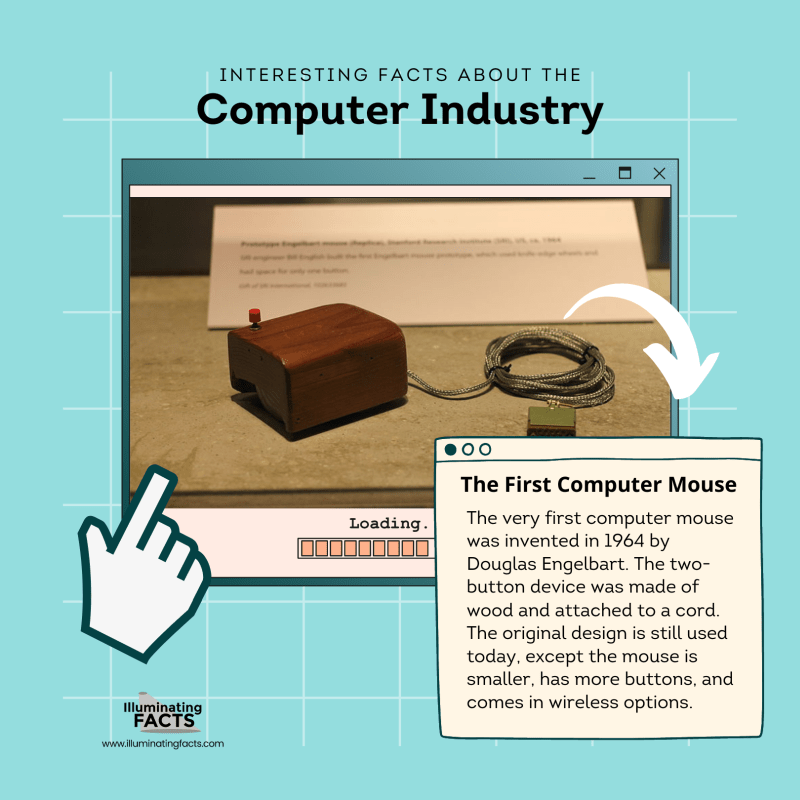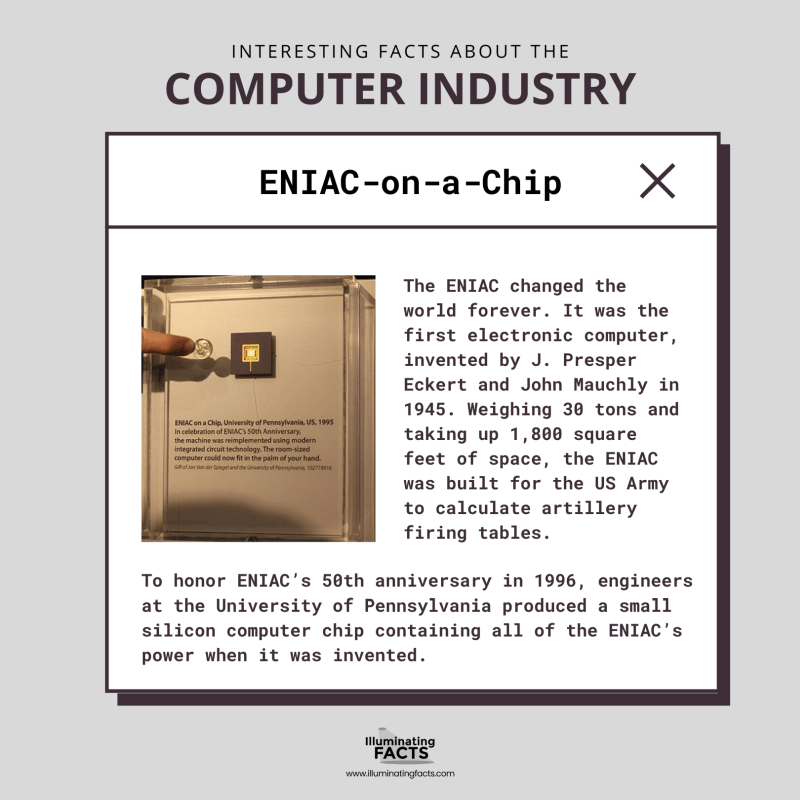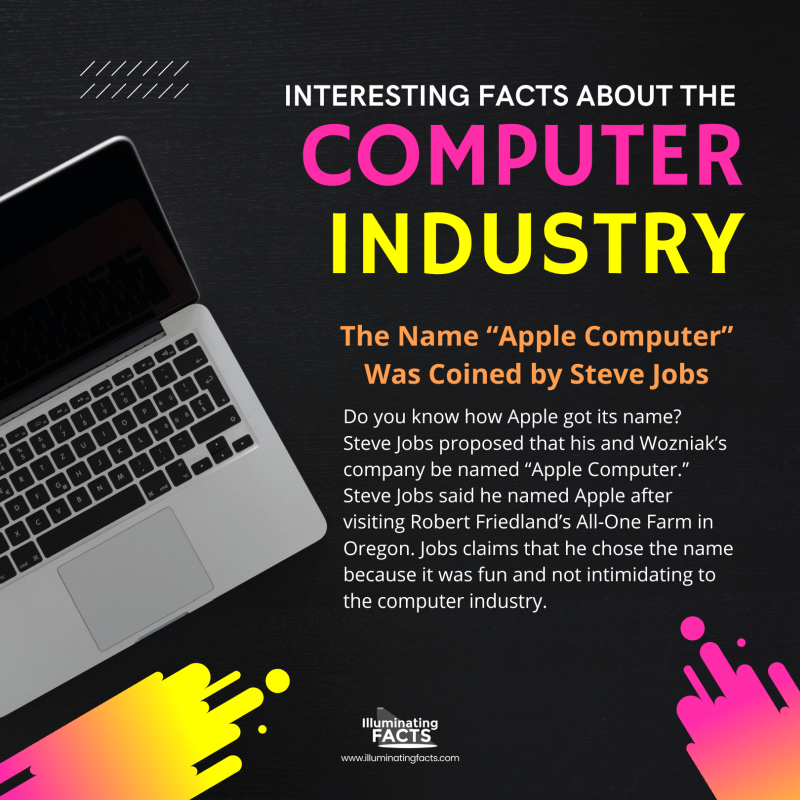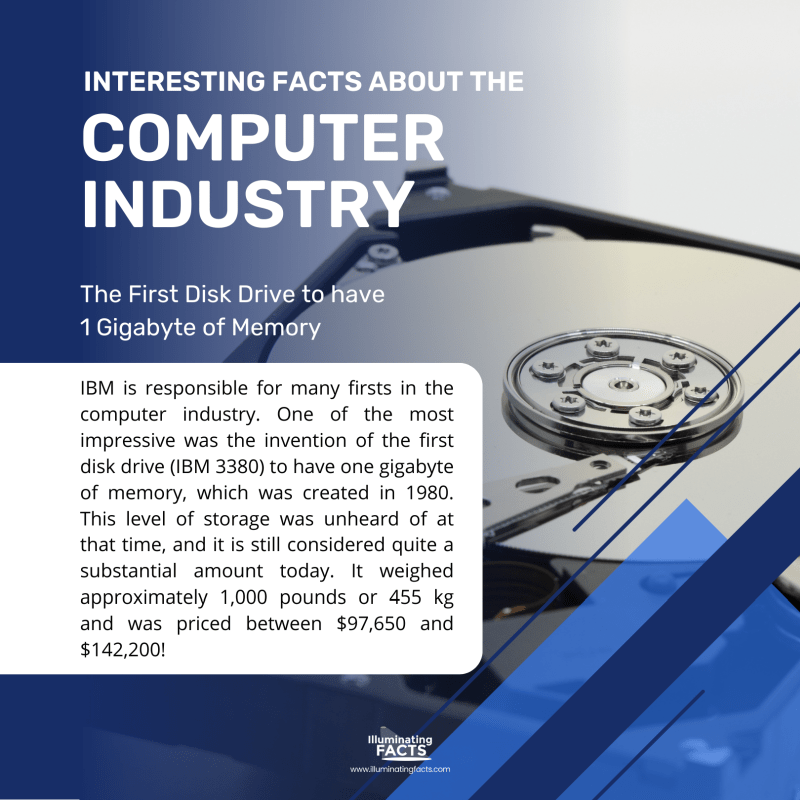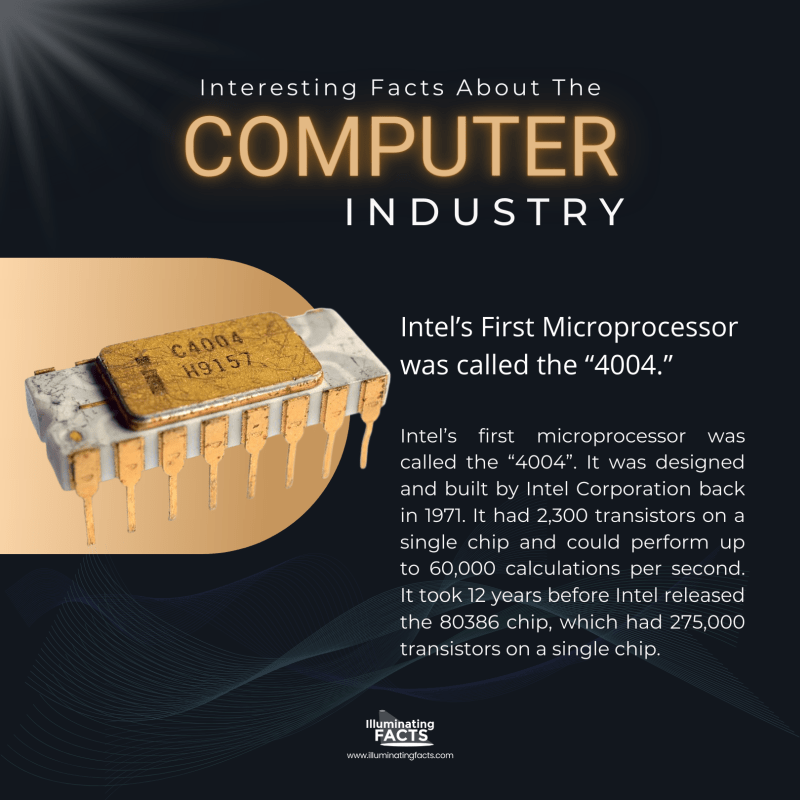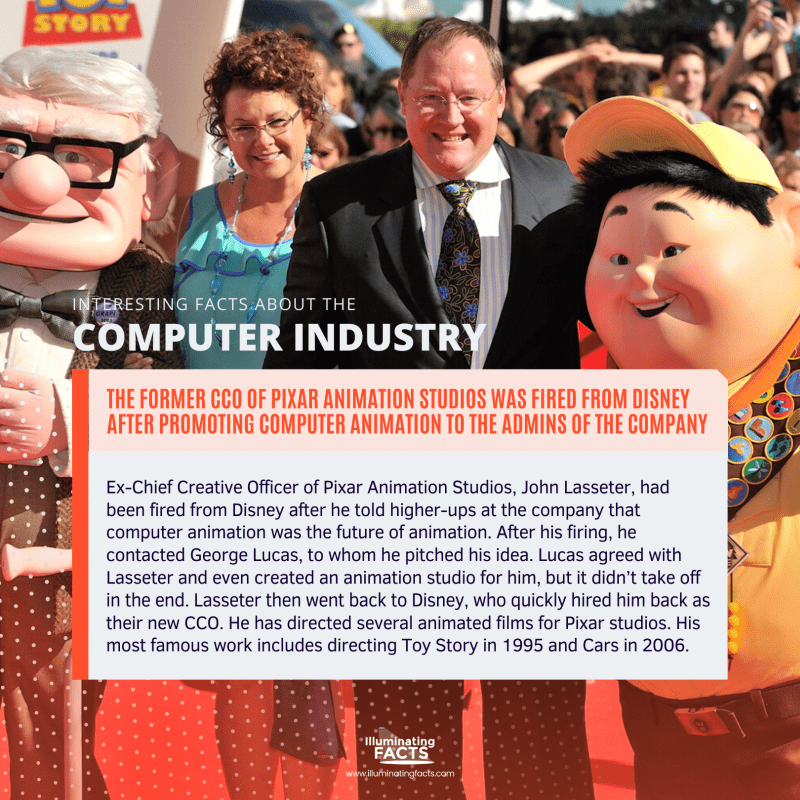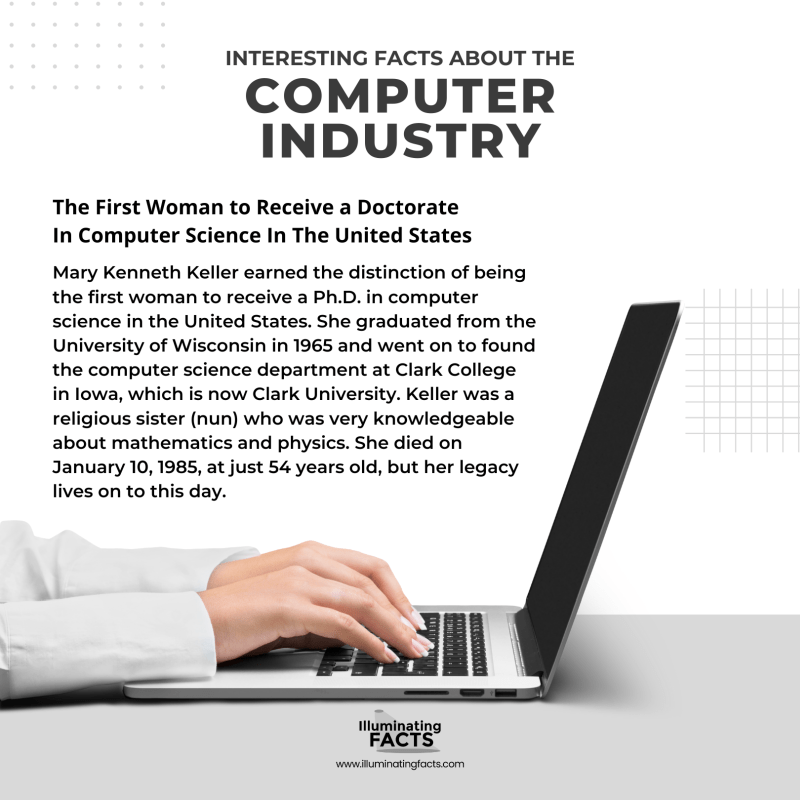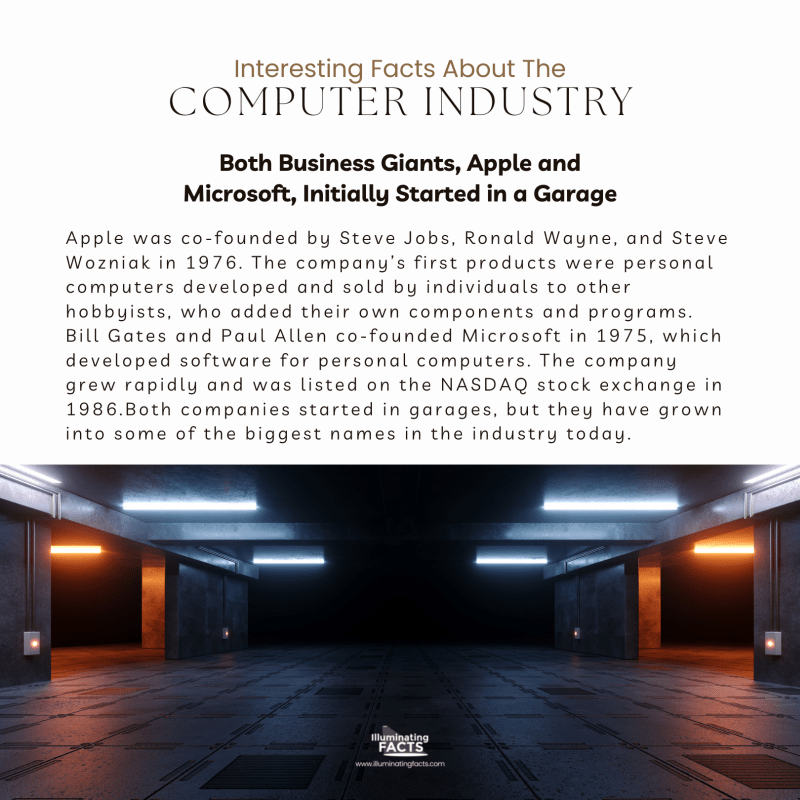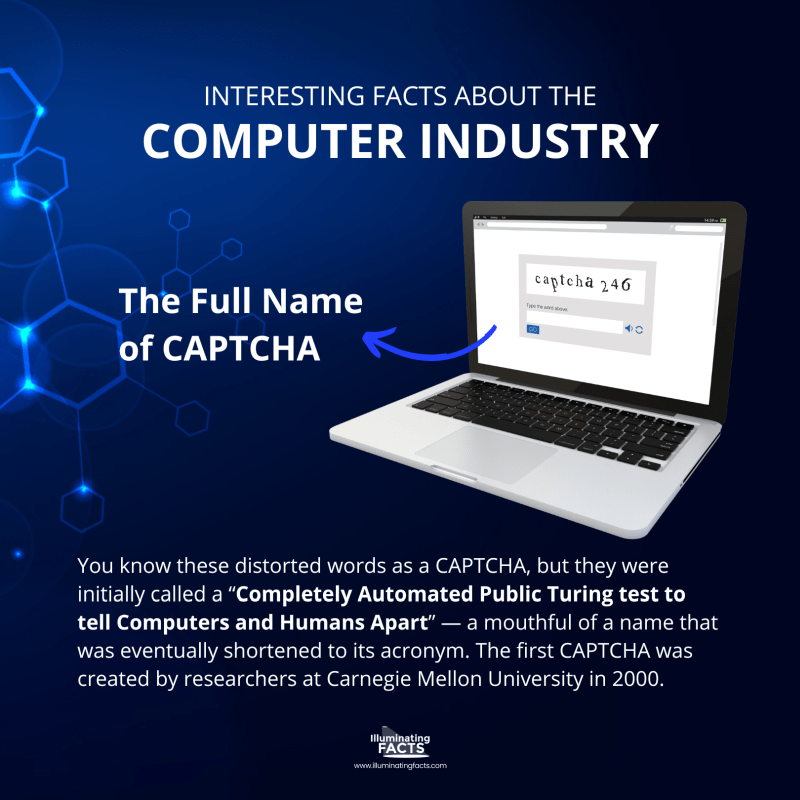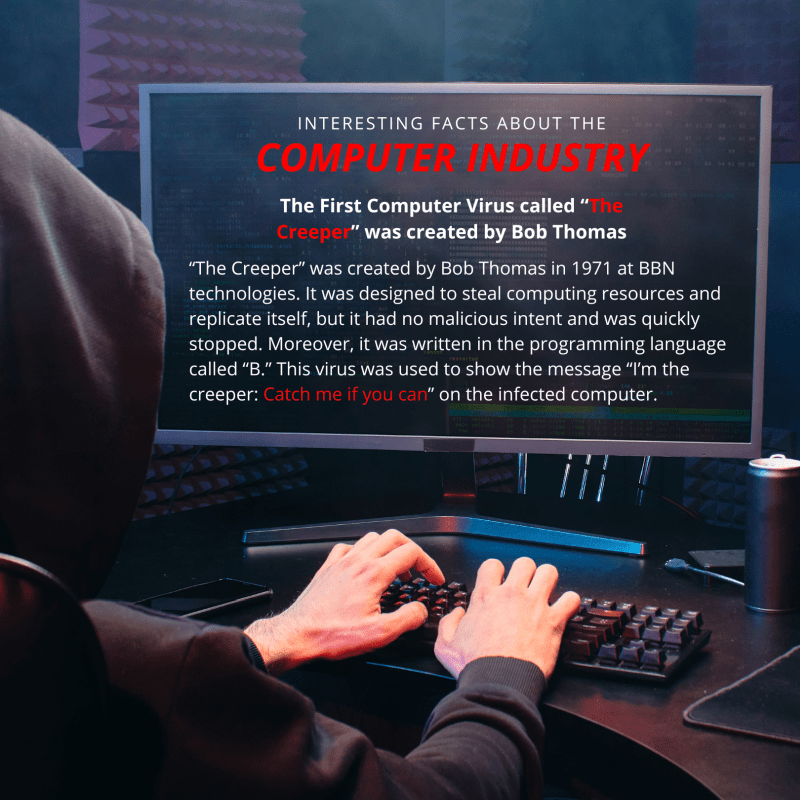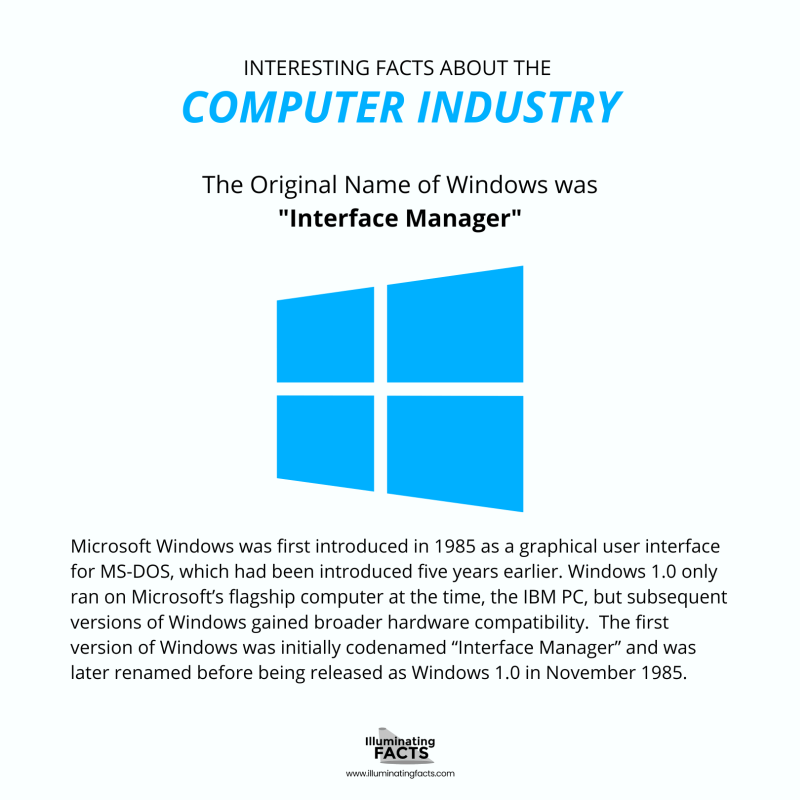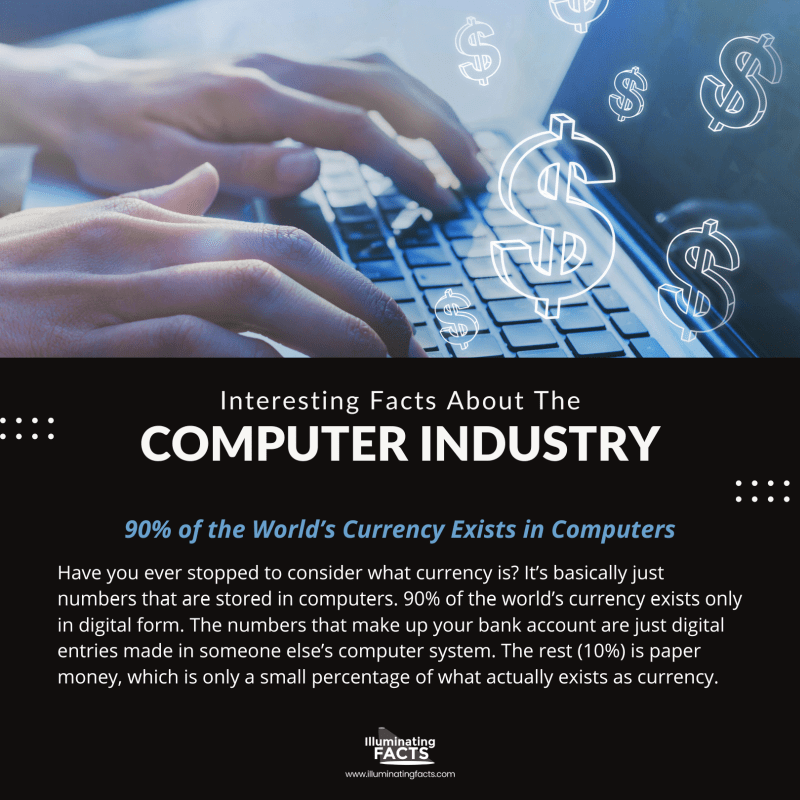While we all have our strong opinion on whether Mac or PC is better and which one a novice should use, the first home computer was created over 50 years ago by John Blankenbaker of Kenbak Corporation. This was a time before home computers were even invented but after the advent of mainframes and minicomputers. These facts are interesting because they show the history of the computer industry and highlight the human genius and creativity behind these devices, which have now become part of everyday life.
1. The First Computer Mouse
The very first computer mouse was invented in 1964 by Douglas Engelbart. The two-button device was made of wood and attached to a cord. The original design is still used today, except the mouse is smaller, has more buttons, and comes in wireless options. [1]
2. ENIAC-on-a-Chip
The ENIAC changed the world forever. It was the first electronic computer, invented by J. Presper Eckert and John Mauchly in 1945. Weighing 30 tons and taking up 1,800 square feet of space, the ENIAC was built for the US Army to calculate artillery firing tables.
To honor ENIAC’s 50th anniversary in 1996, engineers at the University of Pennsylvania produced a small silicon computer chip containing all of the ENIAC’s power when it was invented. [2]
Thanks to Moore’s Law, this is possible in the modern era.
3. The Name “Apple Computer” Was Coined by Steve Jobs
Do you know how Apple got its name?
Steve Jobs proposed that his and Wozniak’s company be named “Apple Computer.” Steve Jobs said he named Apple after visiting Robert Friedland’s All-One Farm in Oregon. Jobs claims that he chose the name because it was fun and not intimidating to the computer industry. [3]
4. More Than 6,000 Viruses are Written or Made Each Month
The first PC virus (different than the first virus created in 1971) came into being in 1986 when a program called Brain was created for MS-DOS. The virus was written by two brothers from Pakistan to prevent customers from making copies of their software for which they did not pay for. The virus did not corrupt data and only contained a copyright message. [4]
Today, more than 6,000 viruses are released every month, causing billions of dollars of financial damage. This figure is what makes the computer industry among the fastest-growing industries today. The fact that so many viruses are being released means that there is a high demand for new software to counter these viruses. [5]
5. The First Disk Drive to have 1 Gigabyte of Memory
IBM is responsible for many firsts in the computer industry. One of the most impressive was the invention of the first disk drive (IBM 3380) to have one gigabyte of memory, which was created in 1980. This level of storage was unheard of at that time. They were packed inside a cabinet that was about the size of a refrigerator, which weighed approximately 1,000 pounds or 455 kg and was priced between $97,650 and $142,200! [6]
6. Intel’s First Microprocessor was called the “4004.”
Intel’s first microprocessor was called the “4004”. It was designed and built by Intel Corporation back in 1971. It had 2,300 transistors on a single chip and could perform up to 60,000 calculations per second. It took Intel more than a decade before it released the 80386 chip, which had 275,000 transistors on a single chip. [7]
In 2010, Federico Faggin, Marcian Hoff, and Stan Mazor were awarded the National Medal of Technology and Innovation or NMTI to pioneer the 4004 microprocessor, one of the first commercially produced microprocessors. [8]
7. The former CCO of Pixar Animation Studios Was Fired from Disney after Promoting Computer Animation to the Admins of the Company
Ex-Chief Creative Officer of Pixar Animation Studios, John Lasseter, had been fired from Disney after he told higher-ups at the company that computer animation was the future of animation.
After his firing, he contacted George Lucas, to whom he pitched his idea. Lucas agreed with Lasseter and even created an animation studio for him, but it didn’t take off in the end.
Lasseter then went back to Disney, who quickly hired him back as their new CCO. He has directed several animated films for Pixar studios. His most famous work includes directing Toy Story in 1995 and Cars in 2006. [9]
8. The First Woman to Receive a Doctorate In Computer Science In The United States
Mary Kenneth Keller earned the distinction of being the first woman to receive a Ph.D. in computer science in the United States. She graduated from the University of Wisconsin in 1965 and went on to found the computer science department at Clark College in Iowa, which is now Clark University.
Keller was a religious sister (nun) who was very knowledgeable about mathematics and physics. She died on January 10, 1985, at just 54 years old, but her legacy lives on to this day. [10]
9. Both Business Giants, Apple and Microsoft, Initially Started in a Garage
Apple was co-founded by Steve Jobs, Ronald Wayne, and Steve Wozniak in 1976. The company’s first products were personal computers developed and sold by individuals to other hobbyists, who added their own components and programs.
Bill Gates and Paul Allen co-founded Microsoft in 1975, which developed software for personal computers. The company grew rapidly and was listed on the NASDAQ stock exchange in 1986.
Both companies started in garages, but they have grown into some of the biggest names in the industry today.
10. Amazon is Now Selling More E-Books and Digital Books than Paperbacks and Hardcovers
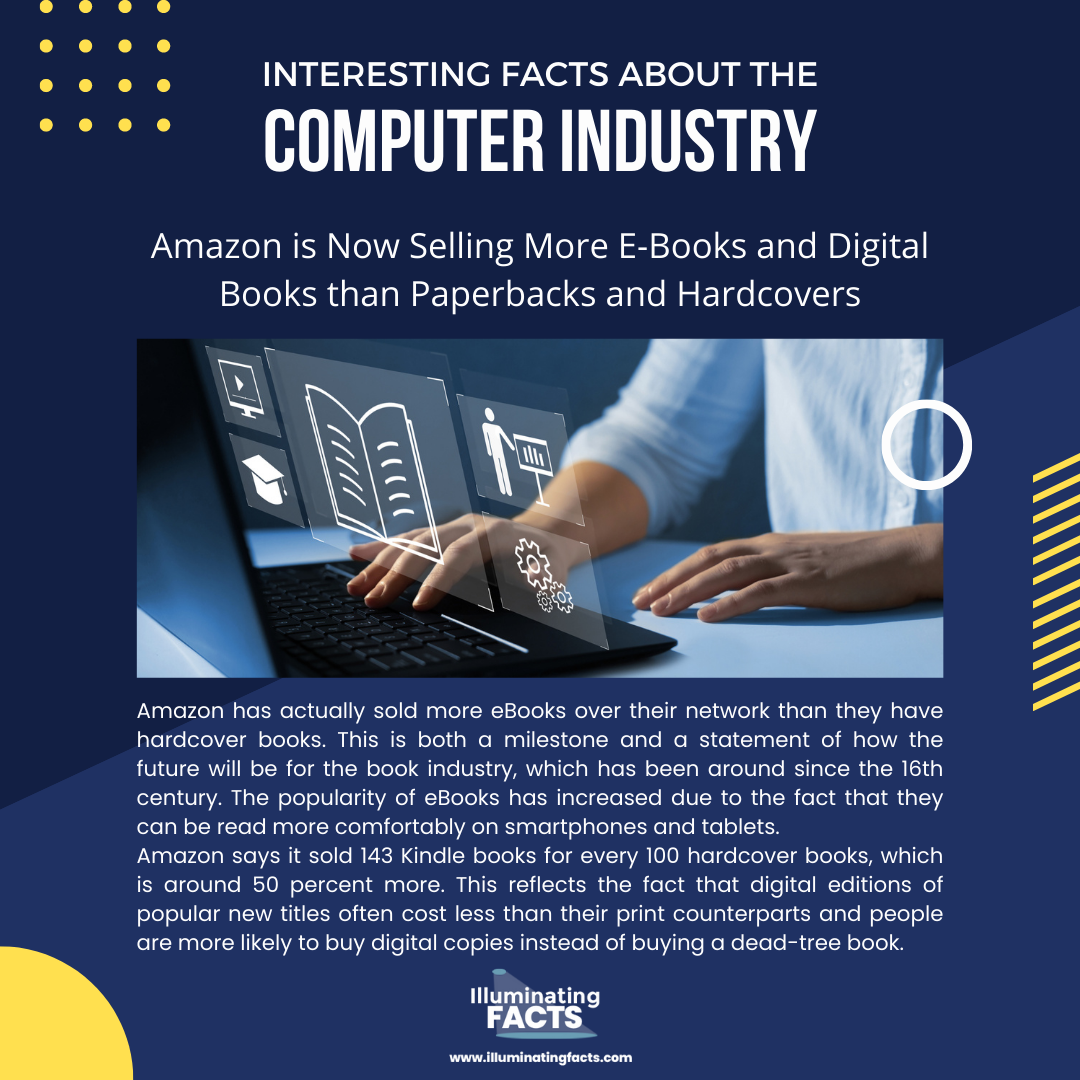
Amazon has actually sold more eBooks over their network than they have hardcover books. This is both a milestone and a statement of how the future will be for the book industry, which has been around since the 16th century. The popularity of eBooks has increased due to the fact that they can be read more comfortably on smartphones and tablets. [11]
Amazon says it sold 143 Kindle books for every 100 hardcover books, which is around 50 percent more. This reflects the fact that digital editions of popular new titles often cost less than their print counterparts and people are more likely to buy digital copies instead of buying a dead-tree book.
11. Modern-day Computers Are Still Not as powerful as the Human Brain
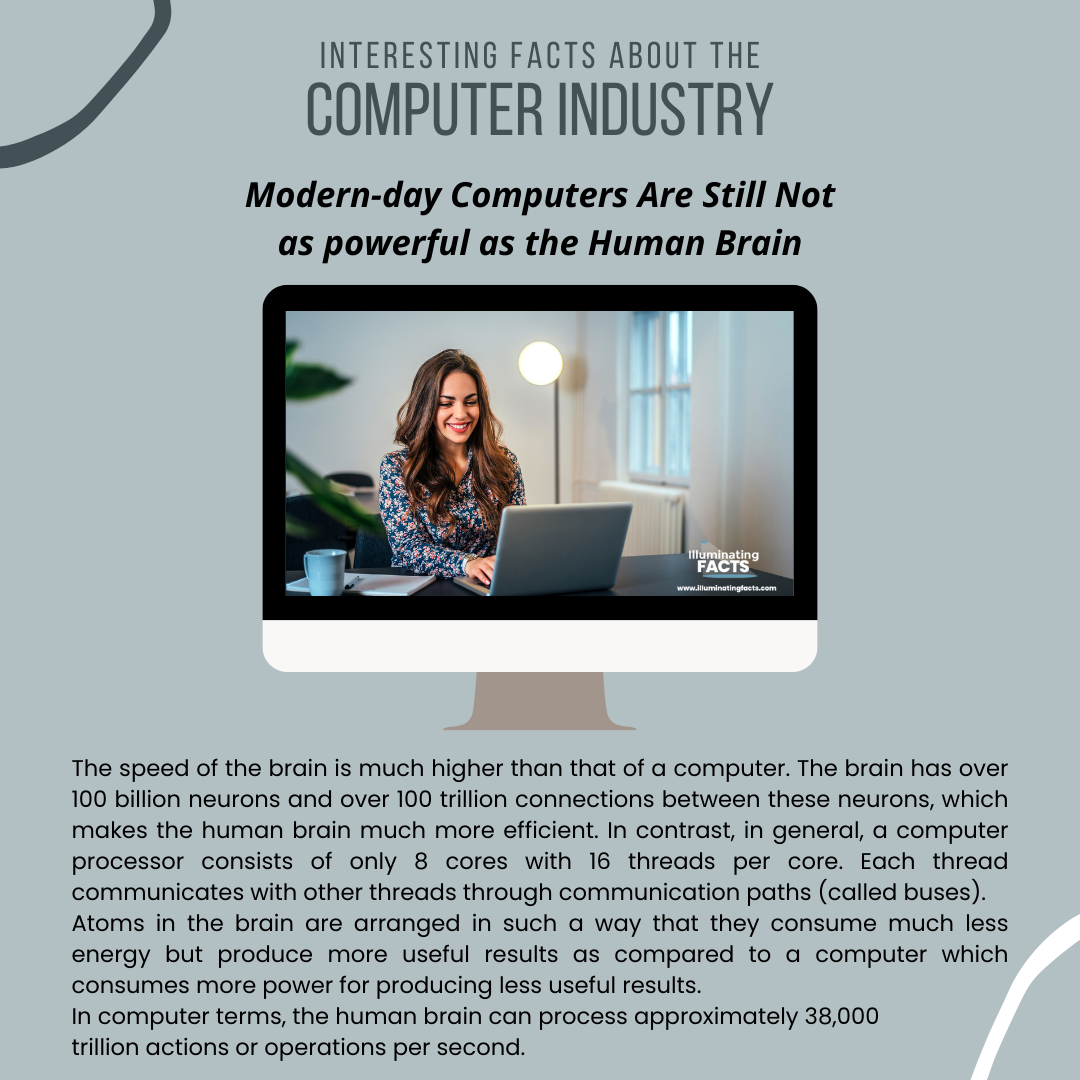
The speed of the brain is much higher than that of a computer. The brain has over 100 billion neurons and over 100 trillion connections between these neurons, which makes the human brain much more efficient In contrast, in general, a computer processor consists of only 8 cores with 16 threads per core. Each thread communicates with other threads through communication paths (called buses).
Atoms in the brain are arranged in such a way that they consume less energy but produce more useful results as compared to a computer which consumes more power for producing less useful results.
In computer terms, The human brain can process approximately 38,000 trillion actions or operations per second. [12]
12. Humans Blink Less When Using a Computer
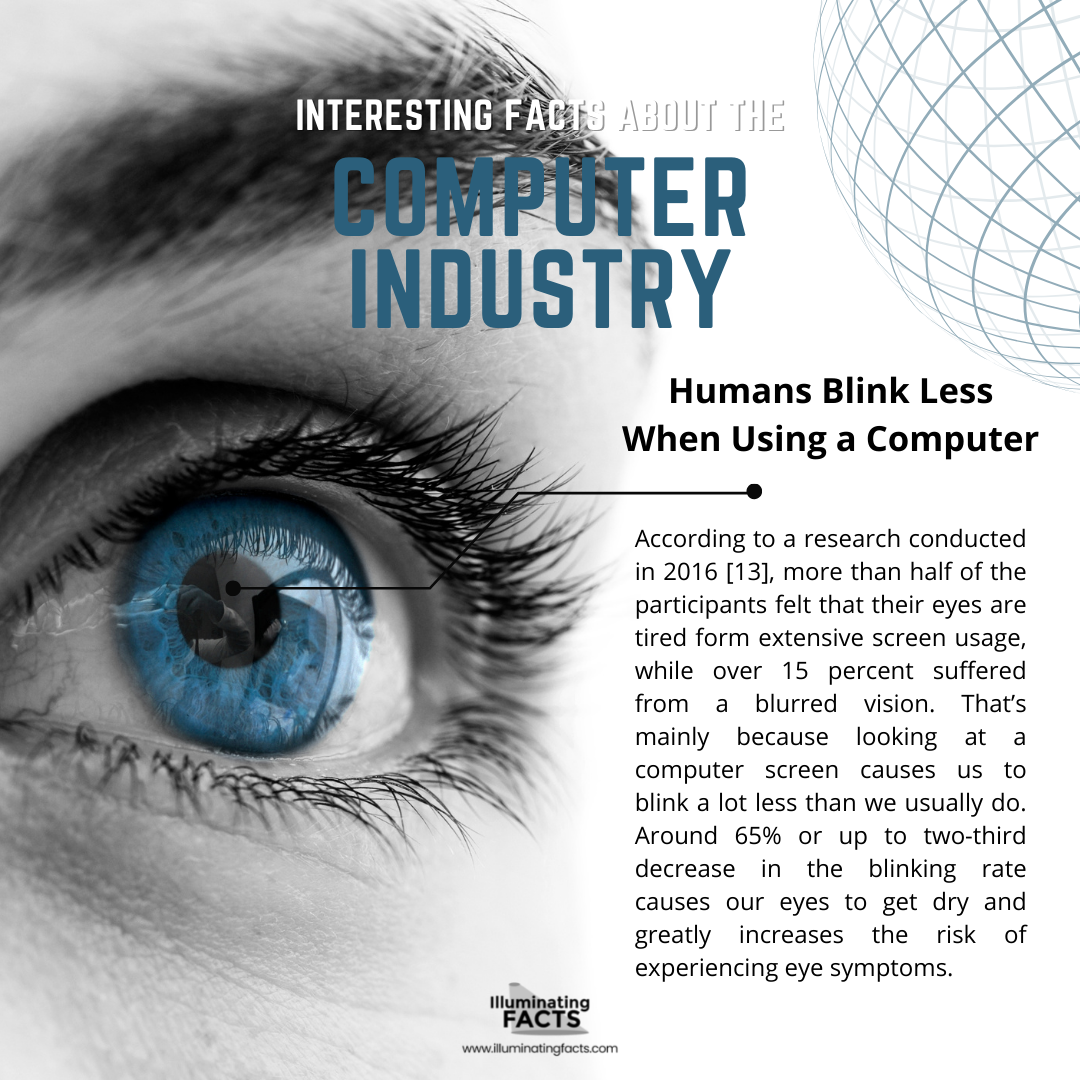
According to a research conducted in 2016 [13], more than half of the participants felt that their eyes are tired form extensive screen usage, while over 15 percent suffered from a blurred vision. That’s mainly because looking at a computer screen causes us to blink a lot less than we usually do. Around 65% or up to two-third decrease in the blinking rate causes our eyes to get dry and greatly increases the risk of experiencing eye symptoms. [13]
13. Ada Lovelace Was the First Computer Programmer
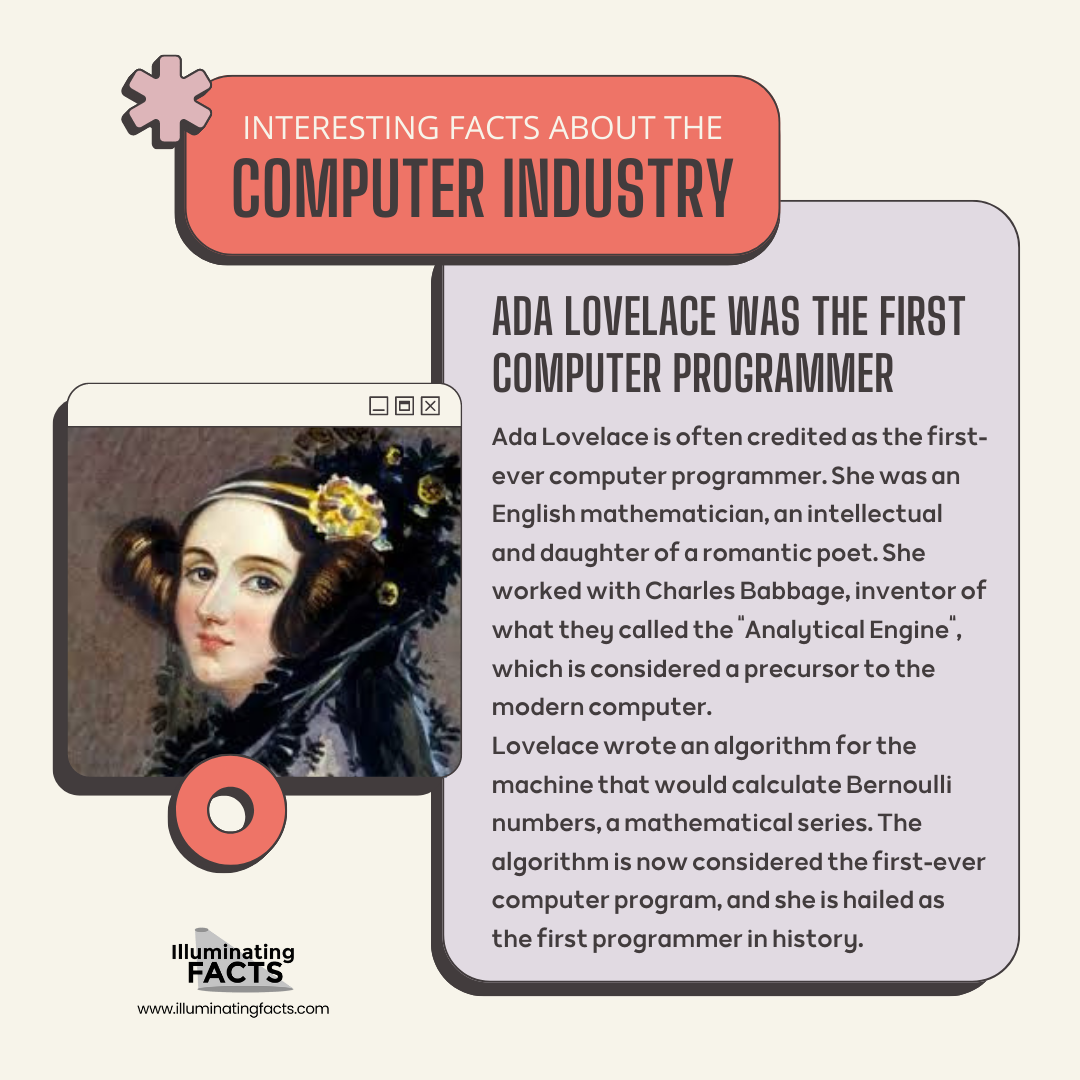
Ada Lovelace is often credited as the first-ever computer programmer. She was an English mathematician, an intellectual and daughter of a romantic poet. She worked with Charles Babbage, inventor of what they called the “Analytical Engine“, which is considered a precursor to the modern computer.
Lovelace wrote an algorithm for the machine that would calculate Bernoulli numbers, a mathematical series. The algorithm is now considered the first-ever computer program, and she is hailed as the first programmer in history. [14]
14. The Full Name of CAPTCHA
You know these distorted words as a CAPTCHA, but they were initially called a “Completely Automated Public Turing test to tell Computers and Humans Apart” — a mouthful of a name that was eventually shortened to its acronym.
The first CAPTCHA was created by researchers at Carnegie Mellon University in 2000.
15. The First Computer Virus called “The Creeper” was created by Bob Thomas
“The Creeper” was created by Bob Thomas in 1971 at BBN technologies. It was designed to see determine the possibility of a computer program that could self-replicate itself. It had no malicious intent and all it did was display the message “I’m the creeper: Catch me if you can”. It removed itself from the old host after infecting the new hard drive. [15]
16. The Invention of the First Webcam
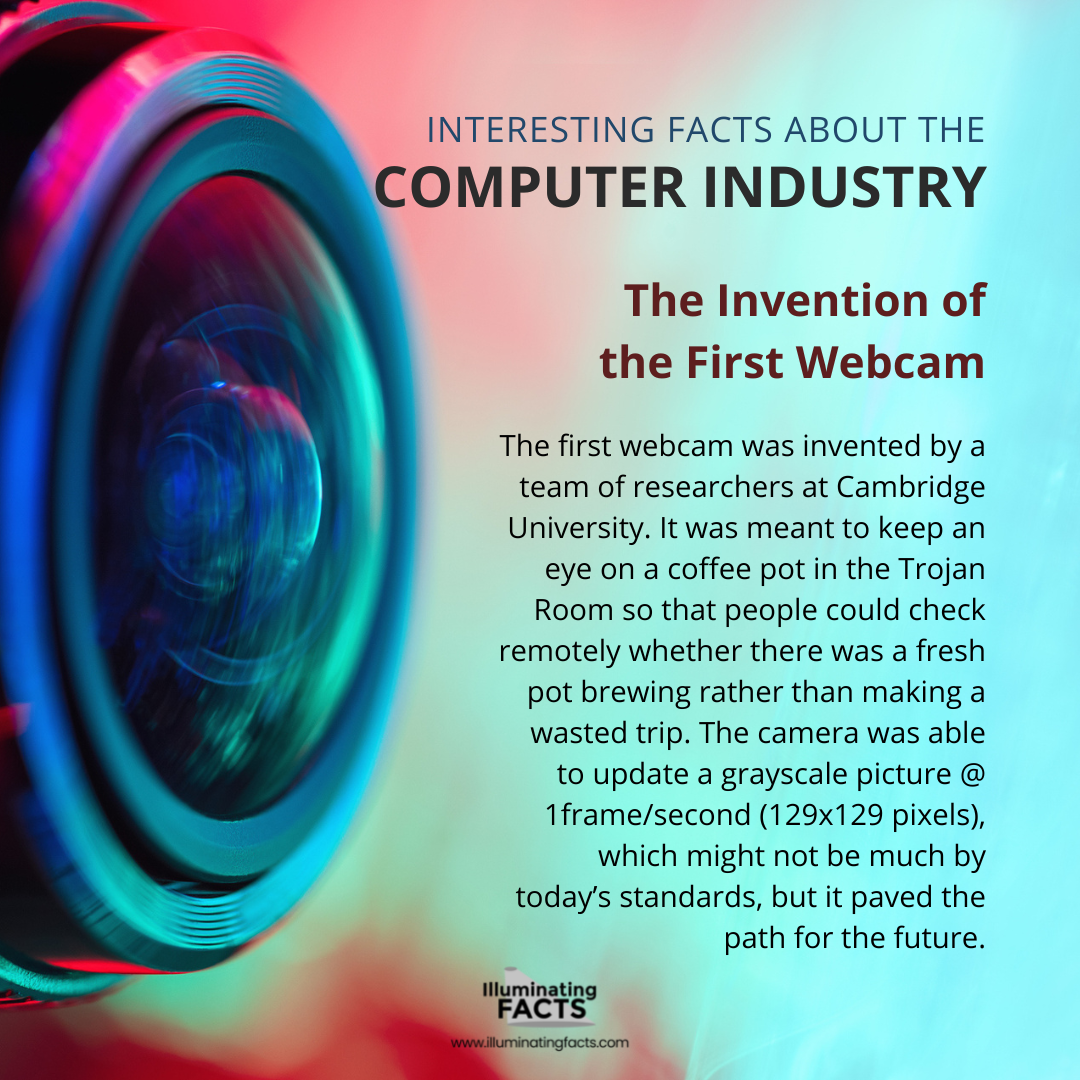
The first webcam was invented by a team of researchers at Cambridge University. It was meant to keep an eye on a coffee pot in the Trojan Room so that people could check remotely whether there was a fresh pot brewing rather than making a wasted trip. The camera was able to update a grayscale picture @ 1frame/second (129×129 pixels), which might not be much by today’s standards, but it paved the path for the future [16]
17. The Original Name of Windows was “Interface Manager”
Microsoft Windows was first introduced in 1985 as a graphical user interface for MS-DOS, which had been introduced five years earlier. Initially, Windows 1.0 only ran on Microsoft’s flagship computer at the time, the IBM PC, but subsequent versions of Windows gained broader hardware compatibility.
The first version of Windows was initially codenamed “Interface Manager” and was later renamed before being released as Windows 1.0 in November 1985.
18. “123456” and “12345678” are the Two Most Hacked Passwords

123456 and 123456789 are the two most commonly used passwords, according to a recent report from the National Cyber Security Centre (NCSC). Other most commonly hacked passwords include qwerty (3.8 million), 11111111 (3.1 million), 12345678 (2.9 million) and abc123 (2.5 million). Some other easy-to-hack and commonly used passwords include Iloveyou, Monkey, Dragon and password1. [17] [18]
19. The First Macintosh Computers Had Signs of Steve Jobs and his Team
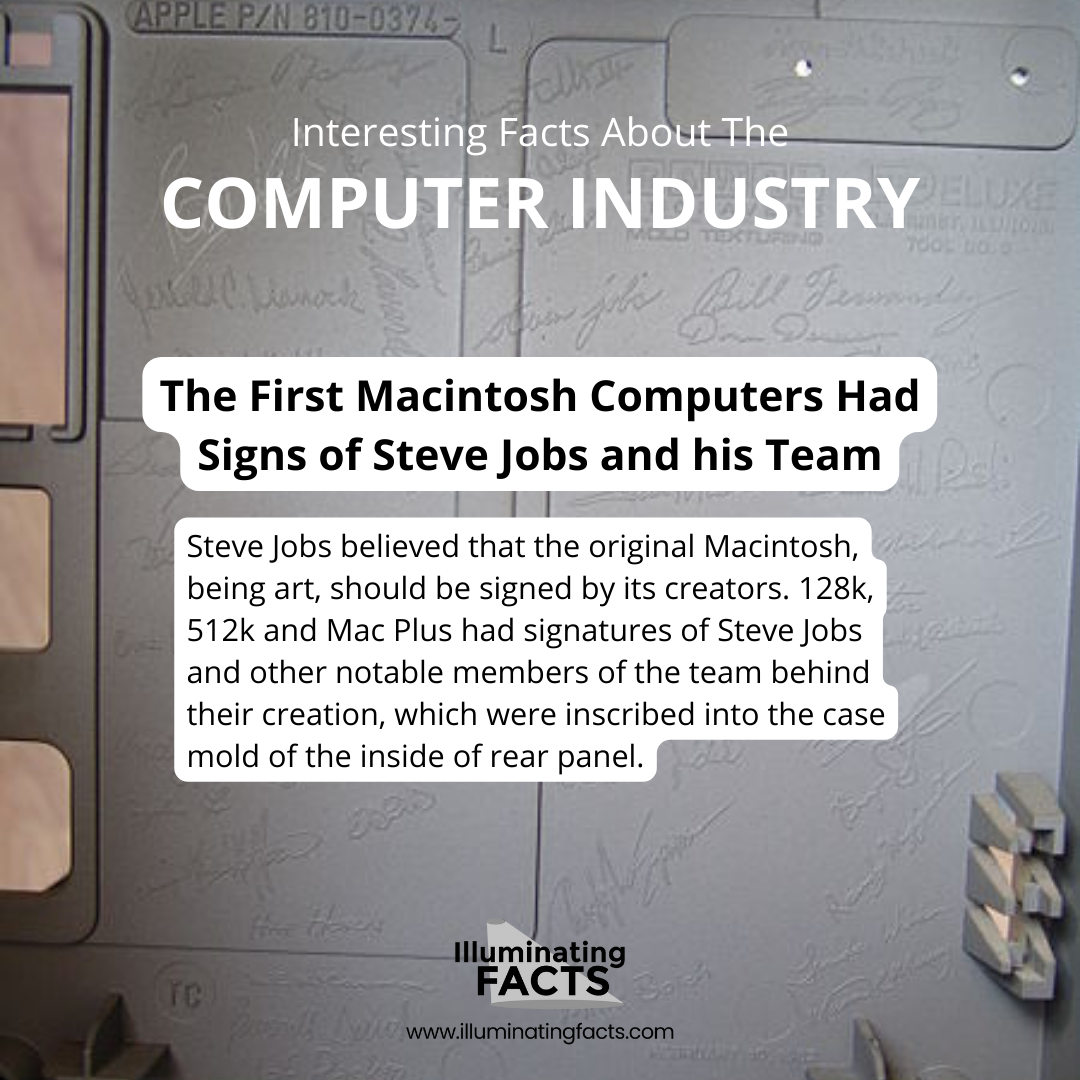
Steve Jobs believed that the original Macintosh, being art, should be signed by its creators. 128k, 512k and Mac Plus had signatures of Steve Jobs and other notable members of the team behind their creation, which were inscribed into the case mold of the inside of rear panel. [19]
20. More than 90% of World’s Currency Exists in Computers
Have you ever stopped to consider what currency is? It’s basically just numbers that are stored in computers. More than 90% of the world’s currency exists in digital form, which includes credit/debit cards, online purchases, direct deposit and other digital assets such as Bitcoin. The numbers that make up your bank account are just digital entries made in someone else’s computer system.
The rest (around 8%) is paper money, which is only a small percentage of what actually exists as currency.
Conclusion
Computers have become a mission-critical part of our daily lives and it’s hard to imagine living without them. It’s also the industry that experienced faster growth than any other industry and advancements have been made at an astronomical scale. A gigabyte hard drive that used to take up the space of a refrigerator can now fit in tiny space.
References
- Douglas Engelbart. (n.d.). Encyclopedia Britannica. https://www.britannica.com/biography/Douglas-Engelbart
- CNET News staff. (1996, February 15). ENIAC fetes 50-year birthday. CNET. https://www.cnet.com/tech/tech-industry/eniac-fetes-50-year-birthday/
- Steve Jobs at reed: Did he name Apple after working in the orchard of a McMinnville commune?(2015, October 15). oregonlive. https://www.oregonlive.com/movies/2015/10/steve_jobs_at_reed_did_he_name.html
- A brief history of computer viruses & what the future holds. (2022, October 20). www.kaspersky.com. https://www.kaspersky.com/resource-center/threats/a-brief-history-of-computer-viruses-and-what-the-future-holds
- Leston, J. (2014, November 2). There are approx. 6,000 new computer viruses released every month. QuizzClub.com — The World’s Largest collection of Quizzes, Trivia Questions, Personality Tests. https://quizzclub.com/trivia/there-are-approx-6-000-new-computer-viruses-released-every-month/answer/1162/
- IBM archives: IBM 3380 direct access storage device. (2003, January 23). IBM – United States. https://www.ibm.com/ibm/history/exhibits/storage/storage_3380.html
- The story of the Intel® 4004. (n.d.). Intel. https://www.intel.com/content/www/us/en/history/museum-story-of-intel-4004.html
- Federico Faggin. (2020, July 31). National Science and Technology Medals Foundation. https://nationalmedals.org/laureate/federico-faggin/
- Why Disney fired John Lasseter – And how he came back to heal the studio. (2014, August 4). TheWrap. https://www.thewrap.com/disney-fired-john-lasseter-came-back-heal-studio/
- On, alumnae: Mary Kenneth Keller | On Wisconsin. (n.d.). On Wisconsin Magazine. https://onwisconsin.uwalumni.com/online-extra/on-alumnae-mary-kenneth-keller
- Nast, C. (2010, July 20). Amazon: E-books outsell hardcovers. WIRED. https://www.wired.com/2010/07/amazon-e-books-outsell-hardcovers
- How does the human brain compare to a computer?(n.d.). Crucial. https://www.crucial.com/blog/technology/how-does-the-human-brain-compare-to-a-computer
- Impact of digital devices on eyes. (n.d.). Bausch + Lomb UK. https://bausch.co.uk/news/blink-rate
- Frasier, S. L. (2015, October 14). In celebration of ada Lovelace, the first computer programmer. Scientific American. https://www.scientificamerican.com/article/in-celebration-of-ada-lovelace-the-first-computer-programmer/
- A brief history of computer viruses & what the future holds. (2022, October 20). www.kaspersky.com. https://www.kaspersky.com/resource-center/threats/a-brief-history-of-computer-viruses-and-what-the-future-holds
- Cade, D. (2013, April 4). The first webcam was invented to check coffee levels without getting up. PetaPixel. https://petapixel.com/2013/04/03/the-first-webcam-was-invented-to-check-coffee-levels-without-getting-up/
- (n.d.). NCSC. https://www.ncsc.gov.uk/news/most-hacked-passwords-revealed-as-uk-cyber-survey-exposes-gaps-in-online-security
- Kapiswe, S. (2019, August 25). NCSC reveals list of world’s most hacked passwords. Technotification. https://www.technotification.com/2019/04/ncsc-worlds-most-hacked-passwords.html
- Rosen, A. (2015, July 28). Signed by Steve Jobs & Co – Signatures inside the original Macintosh case. Cult of Mac. https://www.cultofmac.com/122408/signed-by-steve-jobs-co-signatures-inside-the-original-macintosh-case/
- Reading passage 5a. (n.d.). PTUK Learning Management System. https://lms.ptuk.edu.ps/mod/book/tool/print/index.php?id=164428&chapterid=349#:~:text=Fourth%20Fact%3A%20Over%2090%25%20of,digital%20assets%20without%20a%20bank


